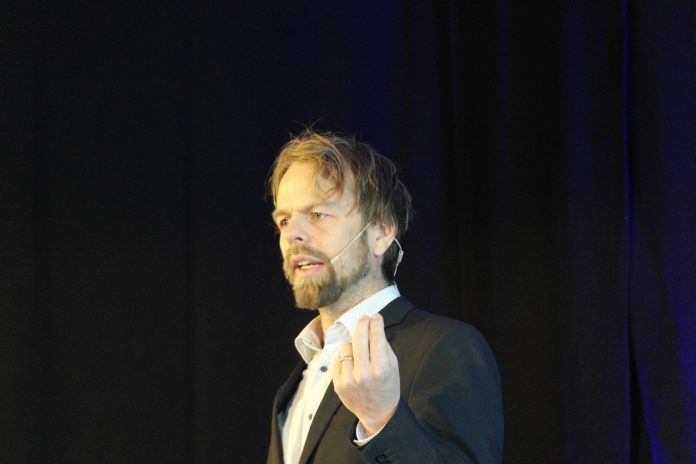The future of fish-farming can change more than you think.
Andreas Waage Nilsen of Creative Netlife Research Bergen, has given himself a formidable task: He’s going to predict the central drivers of future aquaculture.
“We’re going from hindsight to insight in real time. We’re getting new and cheaper sensors. You just have to look at the start-ups — There’s a flood of them. A lot of players are taking this reality seriously and exploiting the opportunities they offer. Now comes the battle to set yourselves apart from what’s becoming a jungle of suppliers.”
Capital
“Easy is the new hard,” Waage Nilsen said, adding, “Earlier, having a lot of capital was the most important factor in success in many value chains. Capital formation in the form of costly production technology is in many ways an anchor. We’ve seen it in many sectors. Technical debt weighs you down. Openness and the ability to interact becomes the strategic advantage, he said.
At an old reception hall in Bergen, a wealth of exhibitors in the start-up phase of their respective ventures alongside industrial players and the curious are here to take in the first Ocean 2017 Conference and tradeshow.
“Before, everything was gathered in server parks. Now it’s collected in The Cloud,” he said, adding for this new industry that, “(Big Data) is becoming an increasingly important commodity.”
Machine-learning
“Reverse machine-learning is becoming a competitive advantage. To understand patterns in large data sets is becoming more important. Autonomous drones in varying forms are part of everyday life. This will affect nearly all segments, not least logistics,” he said, adding that the market artificial intelligence will be “mind-blowingly large in the time to come”.
“A low environmental foot print offers high returns. As we have seen in the aquaculture industry, there’ll be increasing demands for traceability. Green production will be rewarded in the market. It will force through tighter rules. Customer-oriented activity is winning terrain, he continued.
Algorithms
“Digitalization is changing the organizational model. Algorithms are making decisions. The ability to continually innovate is becoming business-critical. There’s an increasing insistence on interdisciplinary partnership,” Waage Nilsen added, using (mobile banking solutions) as an example of the new partnerships possible even across sectors beset by strong rivalries.


